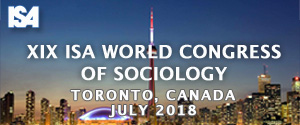When to Worry About Varicose Veins: Understanding the Danger Factors and Symptoms
21st Nov 2023 | By Lukasz | Category: News & EventsVaricose capillaries are an usual condition that impacts countless people wor urofemminldwide. While they are often seen as an aesthetic concern, varicose veins can sometimes show a more serious underlying concern. In this post, we will explore the risk elements and signs and symptoms connected with varicose blood vessels to assist you understand when it is time to seek clinical attention.
What are Varicose Veins?
Varicose blood vessels are bigger, twisted veins that generally show up on the legs. They take place when the shutoffs within the blood vessels become weak or damaged, triggering blood to move backward and swimming pool in the veins. This results in the particular protruding and twisted look of varicose veins.
While anyone can establish varicose capillaries, specific variables boost the probability of their incident. Understanding these risk elements can aid you figure out if your varicose veins call for medical attention.
Danger Elements for Varicose Veins
A number of elements add to the advancement of varicose veins:
- Age: Varicose capillaries are much more typical in older grownups because of the all-natural damage of veins gradually.
- Gender: Women are more likely to develop varicose blood vessels, mostly as a result of hormonal modifications while pregnant and menopause.
- Family Background: If your moms and dads or grandparents had varicose veins, you have a higher risk of establishing them.
- Obesity: Excess weight puts extra pressure on the blood vessels, making them much more prone to ending up being varicose.
- Sedentary Way Of Life: Lack of exercise can damage capillary walls and impair flow.
- Occupation: Jobs that involve long term standing or sitting can enhance the danger of varicose capillaries.
If you have one or more of these threat elements, it is important to monitor your blood vessels for any type of indications of varicose blood vessels.
Signs And Symptoms of Varicose Veins
Varicose capillaries are generally very easy to find, as they look like protruding, twisted blood vessels under the skin. Nevertheless, they can likewise trigger the following signs:
- Aching or heaviness in the affected location
- Swelling, especially after long term durations of standing or sitting
- Burning or throbbing experience in the legs
- Itching around the blood vessels
- Cramps or restless legs, specifically at night
- Skin discoloration or abscess in serious cases
While these signs acuflex and symptoms may not always indicate a significant problem, it is essential to take note of them, especially if they get worse in time. Relentless pain, swelling, or skin adjustments might symbolize an underlying concern that needs medical interest.
When to Seek Clinical Interest
If you have varicose capillaries with any one of the adhering to signs or signs and symptoms, it is a good idea to get in touch with a medical care professional:
- Pain or pain that interferes with everyday activities
- Swelling or redness in the afflicted leg
- Open sores or abscess on the leg
- Hemorrhaging from the varicose capillaries
- Adjustments in skin texture, such as enlarging or inflammation
A medical assessment can establish the severity of your varicose capillaries and dismiss any kind of hidden problems that may need treatment.
Therapy Alternatives for Varicose Veins
Luckily, a number of therapy choices are offered for varicose blood vessels, ranging from traditional measures to minimally intrusive treatments:
- Way Of Living Changes: Normal workout, maintaining a healthy and balanced weight, and raising your legs can aid minimize symptoms and stop varicose blood vessels from aggravating.
- Compression Stockings: These specifically created stockings apply stress to the legs, advertising much better blood circulation and reducing discomfort.
- Sclerotherapy: An usual treatment for little varicose veins and crawler blood vessels, sclerotherapy involves injecting a solution into the affected capillaries, creating them to shut and at some point discolor.
- Endovenous Laser Therapy (EVLT): This minimally invasive treatment uses laser power to seal off the influenced veins, redirecting blood flow to healthier blood vessels.
- Surgical Interventions: In severe cases, surgeries such as vein removing or ligation might be essential to eliminate or shut off harmed capillaries.
Your doctor will examine your condition and advise the most ideal therapy alternative based on your individual requirements.
To conclude
While varicose veins are often safe, recognizing the risk factors and symptoms related to them is vital for identifying when medical focus is needed. If you experience persistent discomfort, swelling, or various other worrying signs, get in touch with a medical care expert for an examination and proper therapy choices. Remember, very early intervention can assist avoid issues and improve your total lifestyle.

